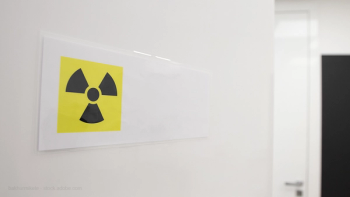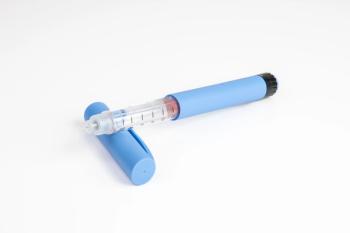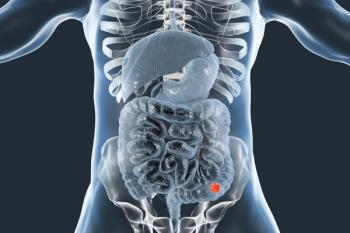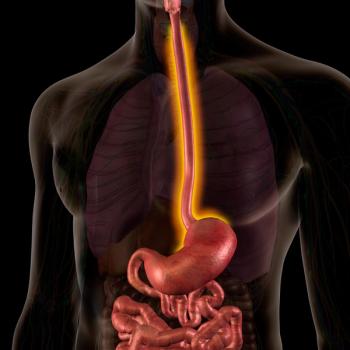
Top tech advancements improving breast cancer screening
Early detection of breast cancer continues to be the best way to save lives and decrease healthcare costs over time, and new technology could help.
Early detection of breast cancer continues to be the best way to save lives and decrease healthcare costs over time. The technology used to detect breast cancer continues to advance, finding masses when they are smaller, giving patients less invasive options for treatment.
Traditional two-dimensional mammography is still used by most providers, making up 65% of units sold in 2016, according to
Baker
“DBT isn’t really the future of breast imaging anymore; it’s the present. More and more practices are adding 3D capability, and many practices are replacing many or all of their 2D systems,” says Jay A. Baker, MD, chief of the breast imaging division and vice chair of clinical affairs at Duke University Medical Center in Durham, North Carolina. “While tomosynthesis is not yet available everywhere, and I wouldn’t say it is standard of care, there seems little doubt that the 3D images are just a better mammogram, and it will become the standard in short order.”
The demand for more concise breast cancer screening is on the rise, and providers will have to compete to offer more comprehensive imaging, says Maen Farha, MD, medical director of the MedStar Union Memorial Hospital Breast Center in Baltimore and faculty member in the department of surgery.
“What drives 3D mammography in large cities is competition. If the neighboring hospital has it, other hospitals have to have it,” says Farha. “Though 3D has proved to reduce the recall rate, it takes a lot more time. It is not a clear-cut advantage. 3D mammography has a bigger benefit for women with dense breasts.”
3D drawbacks
Though 3D mammography is gaining adoption, larger file sizes can include up to 400 images, slowing down read time from radiologists and making file transfer between providers more difficult.
Morin-Ducote
“The biggest factor is how many exams can be read without the radiologist experiencing fatigue. Even if they don’t experience fatigue, the radiologist will have to keep up with the workload,” says Garnetta I. Morin-Ducote, MD, associate professor of radiology at the University of Tennessee Medical Center, Knoxville, Tennessee, and medical director of the school’s University Breast Center. She adds that it is also important that radiologists have workstations that can manage large file sizes that need to be accessed quickly, because sluggish IT system can impede work flow.
Baker agrees, adding that traditional picture archiving systems (PACS) that most radiologist use to view 2D images cannot support 3D images, so a thorough IT assessment is also needed if switching to 3D.
“Many radiologists have to read the tomosynthesis exams off a dedicated breast imaging workstation, often provided by the tomosynthesis vendor. Those same radiologists still use their traditional PACS to read ultrasound, MRI, and non-breast imaging exams. The challenge is that the image display technology that we rely on has, in many cases, not kept up with the new imaging technology,” Baker says. “PACS vendors are responding, and more and more PACS systems can display the 3D exams. But until a PACS system can be upgraded or replaced, many radiologists who read DBT exams must jump back and forth between their regular PACS and the breast specific workstation.”
Beyond tech advancements
Farha says the future of breast cancer screening will include blood tests that can detect early markers, similar to the prostate-specific antigen test men receive to detect prostate cancer.
“That will take a long time to develop because studies will have to compete with the standard practices of mammography,” he says.
Baker says that molecular breast imaging (MBI) is also being developed to detect cancers in women with dense breasts.
“MBI requires the injection of a radioactive drug, which collects in some breast cancers. The limitation of MBI at the moment is that the radiation dose to the patient is too high at FDA-approved doses to allow it’s use for routine screening. The radiation isn’t as big a problem to the breast but rather to the bowel, the kidneys, and the bladder because of the way the body excretes or gets rid of the sestamibi drug,” Baker says, adding that researchers are working on ways to successfully screen the breast with much lower doses of sestamibi, but more research still needs to be done. “There are also relatively few MBI imaging systems in the country, so if the dose can be made low enough, it will take time for most radiology practices to acquire the equipment to do MBI scans.”
Breast MRI tools are also being developed for women at high-risk for breast cancer, however, testing takes longer and is more expensive than with other methods, Baker says.
“Abbreviated screening breast MRI is intended to capture almost all of the same information as a regular breast MRI but in a much shorter time,” Baker says. “Instead of a 30- or 40-minute exam, researchers are working on reducing the time of the exam to 10 to 15 minutes. These shorter studies can be comfortable for the patient but may also be less expensive.”
Other new tools
New devices on the market are being created to supplement standard mammography by making patients more comfortable, and focusing on women with dense breasts.
A mammography device, for example, the Senographe Pristina Dueta, has a wireless remote control that patients can use to apply or release compression of the breast once it has been properly positioned by the examiner.
“Patient-assisted compression is designed to address one of the main concerns women have for avoiding mammography screening, fear of discomfort, by minimizing patients perceived pain and discomfort by giving them an active role in the application of compression,” says Agnes Berzsenyi, president and CEO of GE Healthcare Women’s Health. “The patient then works with the technologist, who guides the patient while she operates the remote, to adjust compression until she reaches adequate compression.”
Though the device is available in both 2D and 3D mammography models, the 3D device produces high quality images while emitting the lowest dose of radiation of any 3D mammography device currently available, according to GE Healthcare. Other features include rounded edges and hand rests, and softer lighting to assist with patient relaxation.
A clinical evaluation of Pristina Dueta at the Women’s Health & Wellness Institute in Boca Raton, Florida, found that compared to images where compression was applied solely by the technologist, patient-assisted compression produces images of similar quality.
Another device, the SmartCurve system from Hologic, features a curved compression surface that mirrors the shape of a woman’s breast so that it is more comfortable when women undergo the procedure.
Donna Marbury is a writer in Columbus, Ohio.
Newsletter
Get the latest industry news, event updates, and more from Managed healthcare Executive.























































